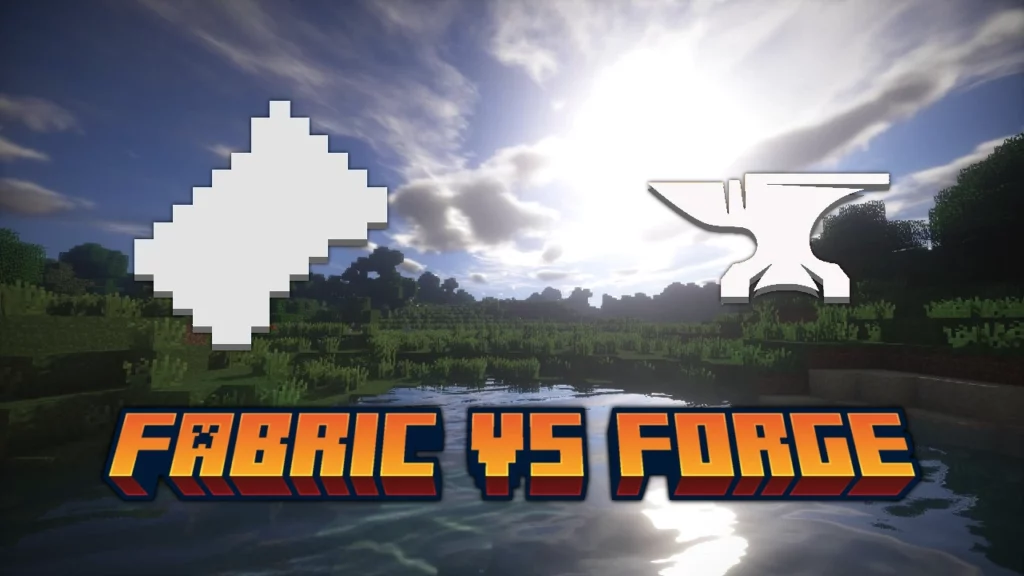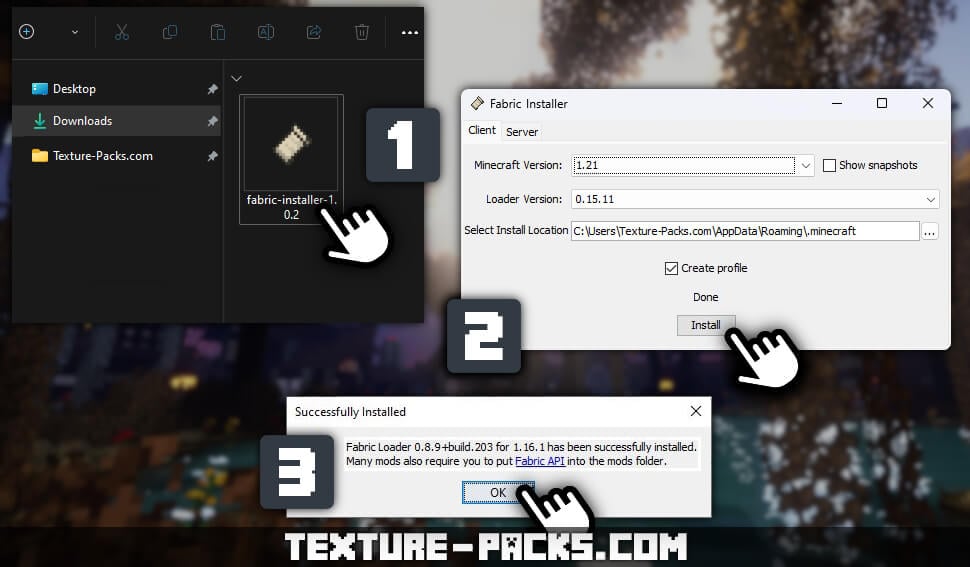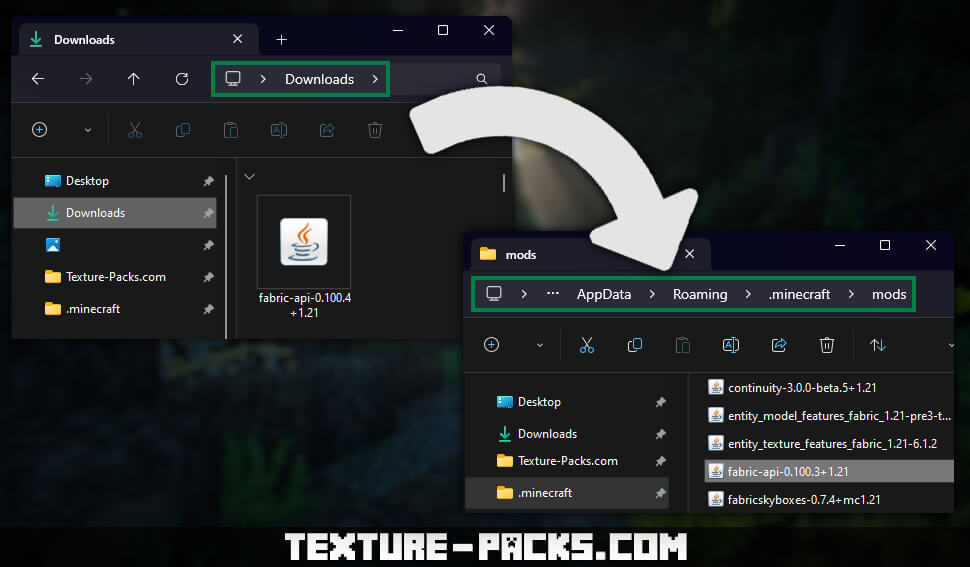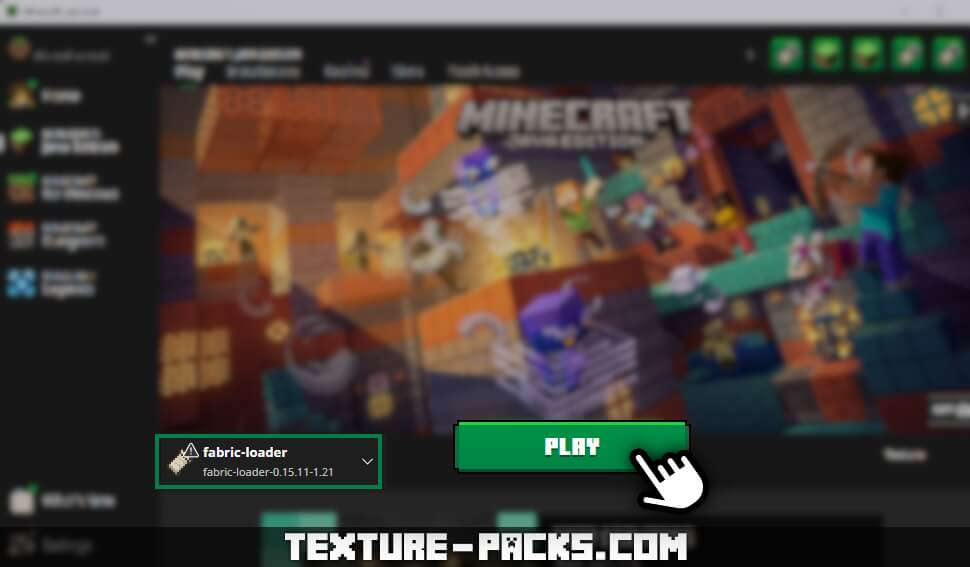As seasoned Minecraft players know, mods can transform the game, adding new features, mechanics, and experiences. To get started with many of the most popular mods, you’ll need the Fabric Loader and Fabric API. In this article, we’ll explore what Fabric offers, its ideal use cases, and how it compares to other mod loaders like Forge. By the end, you’ll understand why this tool is a must-have for any Minecraft player.
Fabric is a lightweight, modular, and highly efficient mod loader for Minecraft. It is the foundation for installing and running Minecraft mods, enabling players to customize their gameplay. The Fabric API is an essential library that provides additional functionalities and support for Fabric mods. Together, they create a robust framework that supports a wide range of mods and modding possibilities.
Key Features of Fabric
- Lightweight and Efficient: The Fabric Mod Loader is designed to be lightweight, minimizing its impact on game performance. This is particularly beneficial for players with lower-end systems or those who want to run multiple mods without significant lag.
- Modularity: Fabric’s modular architecture allows developers to create and maintain their mods easily. This means quicker updates and fewer compatibility issues, ensuring a smoother modding experience.
- Rapid Updates: The Fabric development team is known for their swift response to Minecraft updates. Typically, Fabric is updated within days of a new Minecraft version release, allowing players to continue using their favorite mods without long delays.
- Fabric API: The Fabric API enhances the capabilities of the Fabric Mod Loader, providing a wide range of tools and functionalities for mod developers. This includes hooks, libraries, and utilities that simplify the creation of complex and feature-rich mods.
- Vibrant Community: Fabric boasts a large and active community. This community support includes extensive documentation, forums, and Discord channels, making it easier for both players and developers to get help and share their experiences.
Ideal Use Cases for Fabric
Fabric is an excellent choice for various types of Minecraft players and developers:
- Performance-Conscious Players: If you’re looking to add mods to your game without a significant performance hit, Fabric is the way to go. Its lightweight design ensures your game runs smoothly, even with multiple mods installed.
- Early Adopters: For those who like to stay on the cutting edge, Fabric’s rapid update cycle is perfect. You won’t have to wait long to use your favorite mods with the latest Minecraft version.
- Mod Developers: Fabric’s modularity and extensive API make it a favorite among developers. It simplifies the process of creating, updating, and maintaining mods.
Comparing Fabric Loader with Forge Loader
While we’ll delve deeper into Forge in a separate article, it’s helpful to understand how Fabric compares to Forge, another popular mod loader.

Lightweight vs. Comprehensive
- Fabric: Known for its lightweight and modular design, Fabric is ideal for players seeking a streamlined modding experience. It’s perfect for those who prioritize performance and simplicity.
- Forge: Forge is more comprehensive and feature-rich, supporting larger and more complex mods. However, this can come at the cost of higher performance demands and a slower update cycle.
Update Cycle
- Fabric: Offers rapid updates, often within days of a new Minecraft release. This is perfect for players who want to stay on the cutting edge of Minecraft modding.
- Forge: While Forge also updates regularly, its more extensive feature set and complexity can result in slower update cycles compared to Fabric.
Community and Ecosystem
- Fabric: Has a growing and active community focused on lightweight and performance-friendly mods.
- Forge: Boasts a larger and more established community, with a vast array of mods and modpacks available.
Notable Drawbacks of Fabric Loader
- Smaller Mod Library: Compared to Forge, Fabric has a smaller library of available mods. While the number of mods for Fabric is growing rapidly, Forge still has a more extensive collection of mods, especially for older versions of Minecraft.
- Compatibility with Forge Mods: Fabric and Forge mods are not compatible with each other. This means that players often need to choose one mod loader and stick with it, as switching between Fabric and Forge can be cumbersome and might require separate game installations.
- Learning Curve for Developers: For developers who are used to working with Forge, transitioning to Fabric might require some adjustment. Fabric’s API and modding approach are different, which can necessitate learning new tools and practices.
- Less Comprehensive Tooling: While Fabric is lightweight and efficient, it lacks some of the comprehensive tools and features available with Forge. For example, Forge has a built-in configuration GUI, more extensive documentation, and a larger suite of developer tools.
- Community Size: Although Fabric has a growing and active community, it is still smaller compared to the long-established Forge community. This can mean fewer tutorials, resources, and third-party tools specifically designed for Fabric.
- Modpack Complexity: Creating and managing complex modpacks with Fabric can sometimes be more challenging compared to Forge. Forge’s ecosystem has many tools and launchers that simplify the creation and distribution of modpacks, whereas Fabric is still catching up in this area.
While these drawbacks are notable, they do not overshadow the many advantages that Fabric offers. Its lightweight design, rapid update cycle, and modularity make it a compelling choice for many Minecraft players and developers. However, it’s essential to weigh these factors and consider your specific needs and preferences when deciding whether to use Fabric or another mod loader like Forge.
Our Opinion
In our opinion, Fabric is an exceptional mod loader that offers a seamless and efficient modding experience. Its lightweight design, rapid update cycle, and strong community support make it a top choice for both players and developers. While Forge remains a powerful and feature-rich alternative, Fabric’s performance and ease of use make it a compelling option, especially for those seeking a streamlined and responsive modding experience.
In conclusion, Fabric is a versatile and efficient mod loader that excels in performance, update speed, and community support. Whether you’re a player looking to enhance your game or a developer aiming to create new mods, Fabric provides a robust and user-friendly platform to build upon. Stay tuned as we continue to explore the world of Minecraft mods in this new category on our website!
Remember, you can download all Fabric versions directly from our website!
Fabric was first published on November 8, 2018 and is compatible with these Minecraft versions: 1.21.7 – 1.21.6 – 1.21.5 – 1.21.4 – 1.21.3 – 1.21.2 – 1.21.1 – 1.21 – 1.20.6 – 1.20.5 – 1.20.4 – 1.20.3 – 1.20.2 – 1.20.1 – 1.20 – 1.19.4 – 1.19.3 – 1.19.2 – 1.19.1 – 1.19 – 1.18.2 – 1.18.1 – 1.18 – 1.17.1 – 1.17 – 1.16.5 – 1.16.4 – 1.16.3 – 1.16.2 – 1.16.1 – 1.16 – 1.15.2 – 1.15.1 – 1.15 – 1.14.4 – 1.14.3 – 1.14.2 – 1.14.1 – 1.14
Video
How To Install Fabric Loader
Before you start, ensure you have Java installed on your computer, as it is required for running Minecraft mods. Java is available for Windows, Mac OS X, Linux, and Solaris.
1) Download Fabric Loader
First, visit the download section to get all official Fabric Loader links. Once there, click on “Download Fabric Installer“. This version is versatile and will ensure compatibility with all operating systems.
2) Open and Install Fabric Loader
Once the installer is downloaded, locate it in your downloads folder. Right-click on the JAR file and select “Open with”. Pick Java (TM) Platform SE binary like it’s your favorite snack. Depending on your operating system, you might get lucky and just double-click to open it—no extra effort required! But if Windows is being its usual stubborn self and won’t open the Fabric loader, it’s time to install Jarfix.
If Java is not an option, you may need to install it as mentioned earlier. The Fabric mod system installer will appear. Ensure the correct Minecraft version is selected, tick “Create profiles”, and click “Install”.

3) Download and Install Fabric API
Next, head to the download section once again. Here, you’ll need to download the Fabric API, which is crucial for the most popular Fabric mods. For this tutorial, we will download the most up-to-date version by selecting it from the list. If you want an older version, click on the “Show All Versions” button in the download section.
Copy or move the Fabric API file to your Minecraft mods folder. If a “mods” folder does not exist, create one by right-clicking, selecting “New Folder”, and naming it “mods” (all lowercase) in the .minecraft directory.

4) Launch Minecraft
Open the Minecraft launcher. You should see Fabric listed as an option in the bottom left corner. If not, navigate to “Installations”, tick “Modded”, and create a new installation by selecting Fabric from the versions dropdown menu.

Troubleshooting Installation Issues
If the installation fails, ensure Minecraft and the Minecraft launcher are closed. Additionally, verify that you have played the selected Minecraft version at least once.
Fabric Mod Download
Fabric API
[1.21.7+] Download Fabric API
[1.21.6] Download Fabric API
[1.21.5] Download Fabric API
[1.21.4] Download Fabric API
[1.21.3] Download Fabric API
[1.21.2] Download Fabric API
[1.21.1] Download Fabric API
[1.21] Download Fabric API
[1.20.5] Download Fabric API
[1.20.4] Download Fabric API
[1.20.3] Download Fabric API
[1.20.2] Download Fabric API
[1.20.1] Download Fabric API
[1.20] Download Fabric API
[1.19.4] Download Fabric API
[1.19] Download Fabric API
[1.18.2] Download Fabric API
[1.18.1 – 1.18] Download Fabric API
[1.17.1] Download Fabric API
[1.17] Download Fabric API
[1.16.5] Download Fabric API
[1.16.1 – 1.16] Download Fabric API
[1.15.2] Download Fabric API
[1.15] Download Fabric API
[1.14.4] Download Fabric API
[1.14] Download Fabric API

first lol
is it for latest version 1.21.5?
Yes
I’m using the mod in my survival world xD